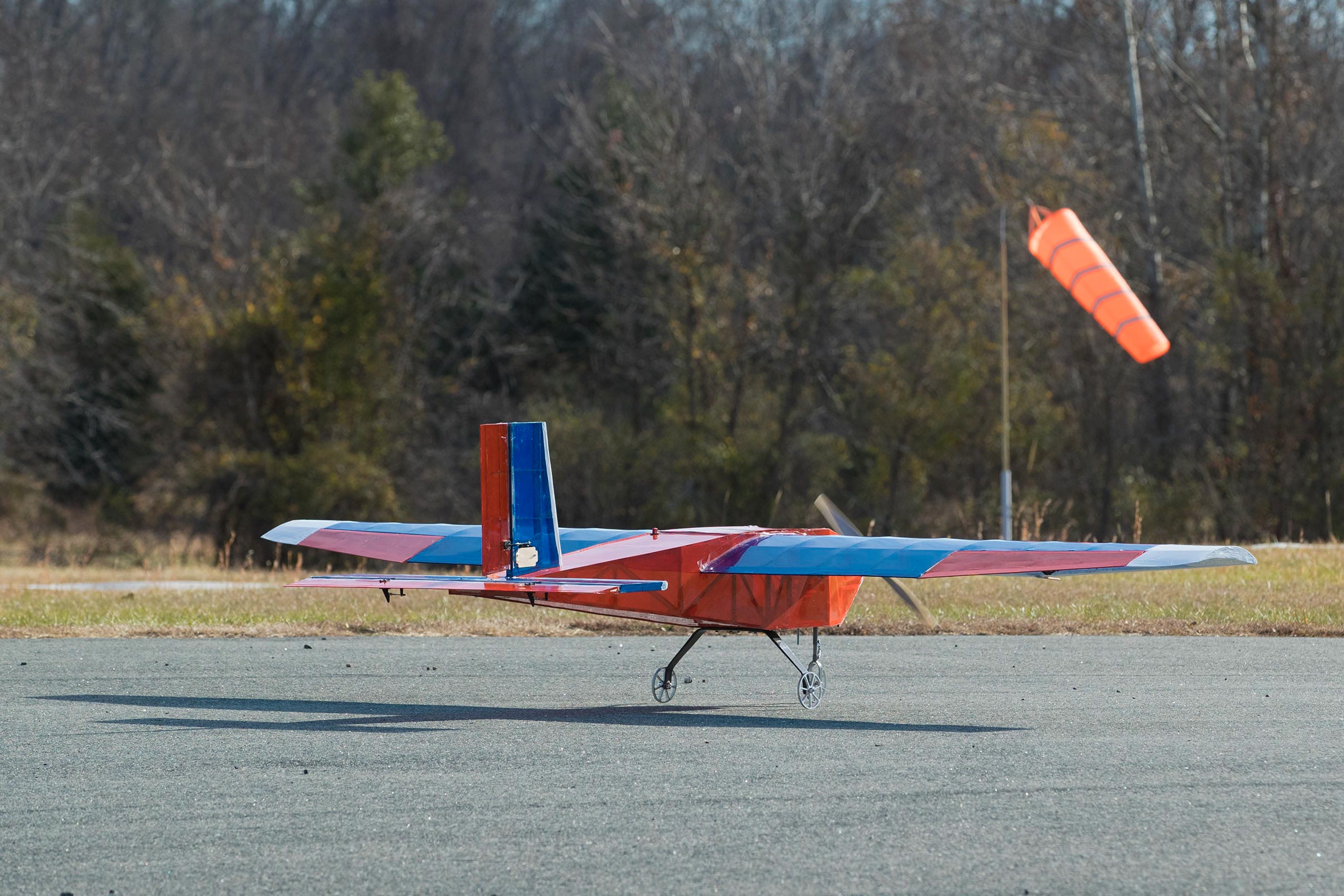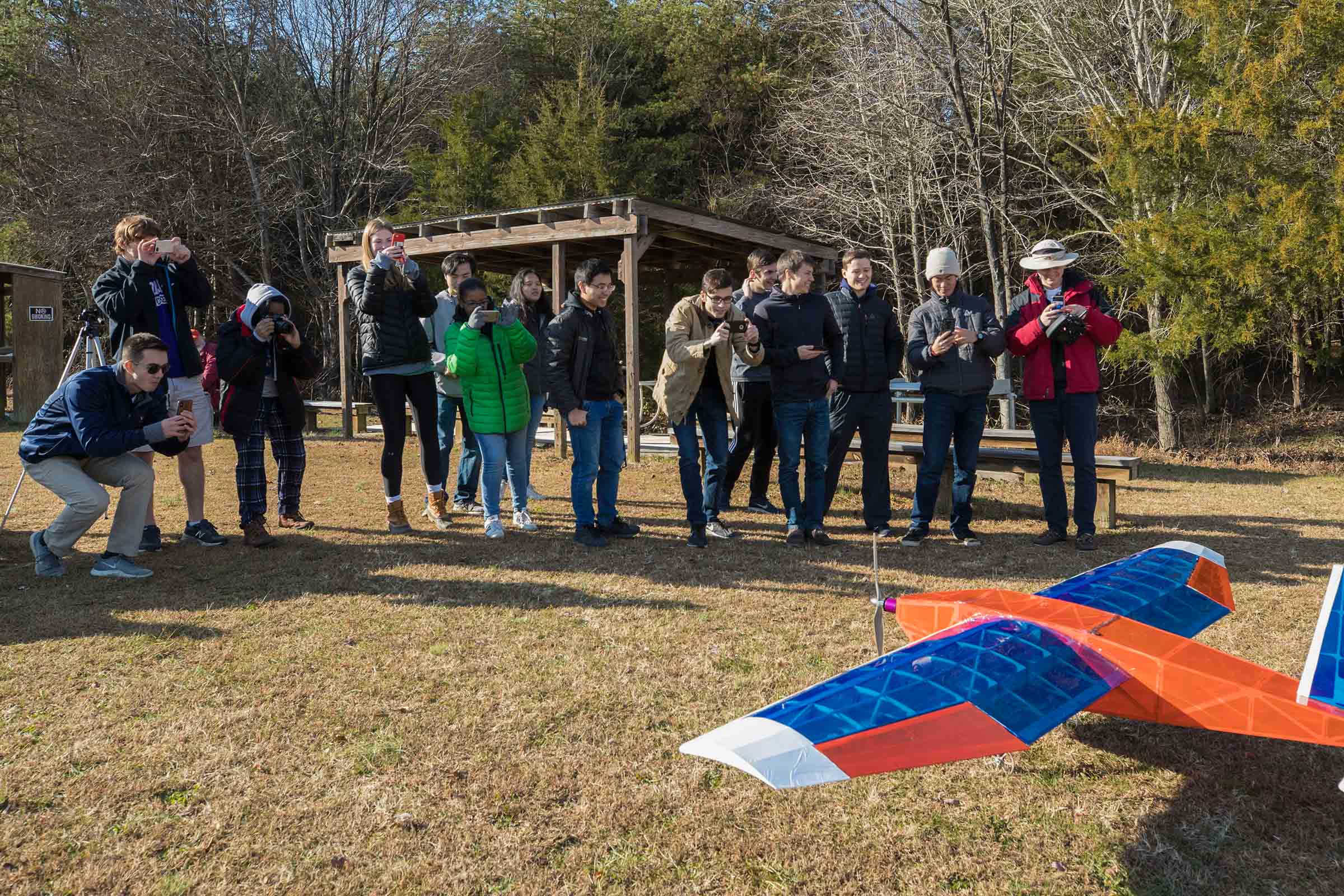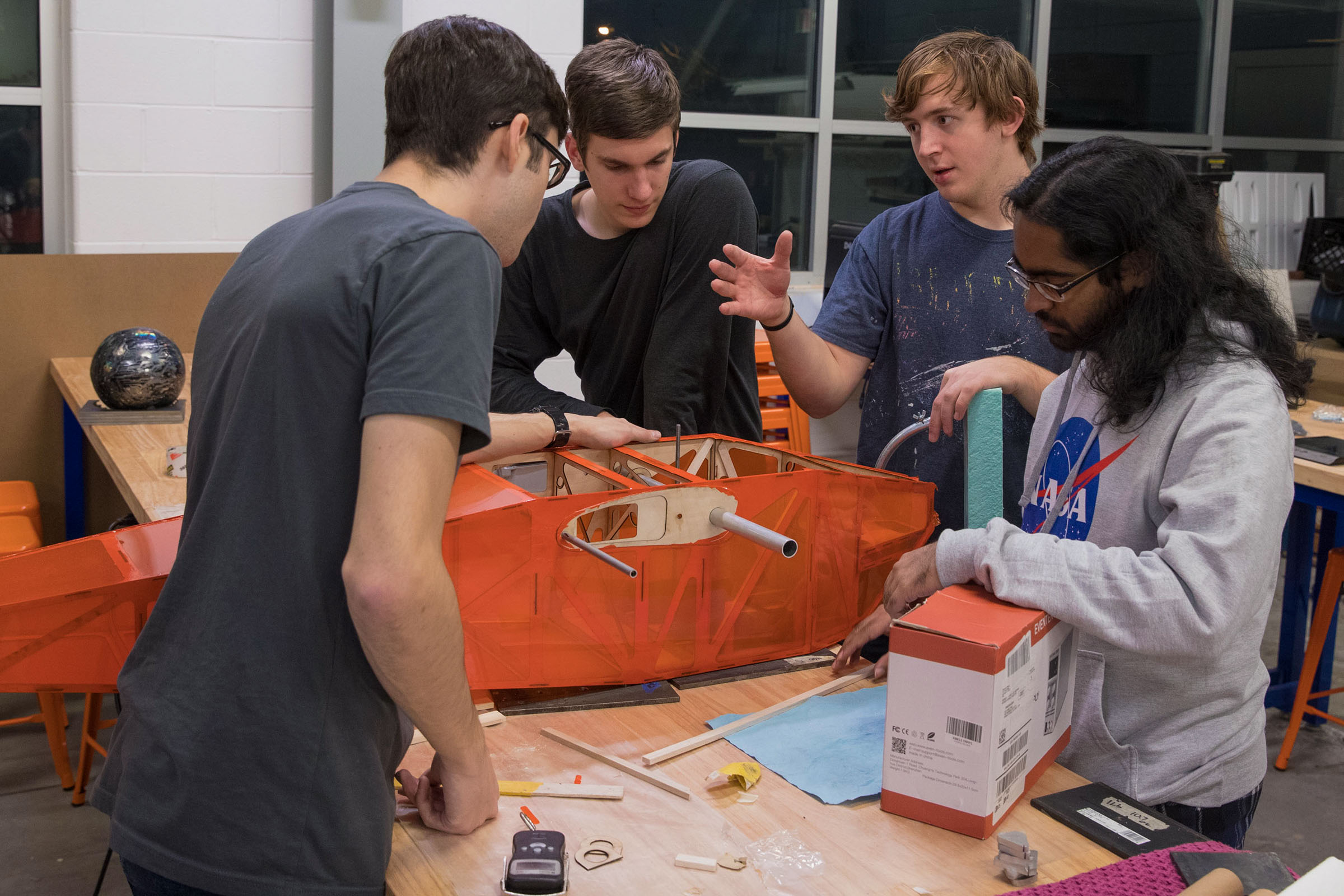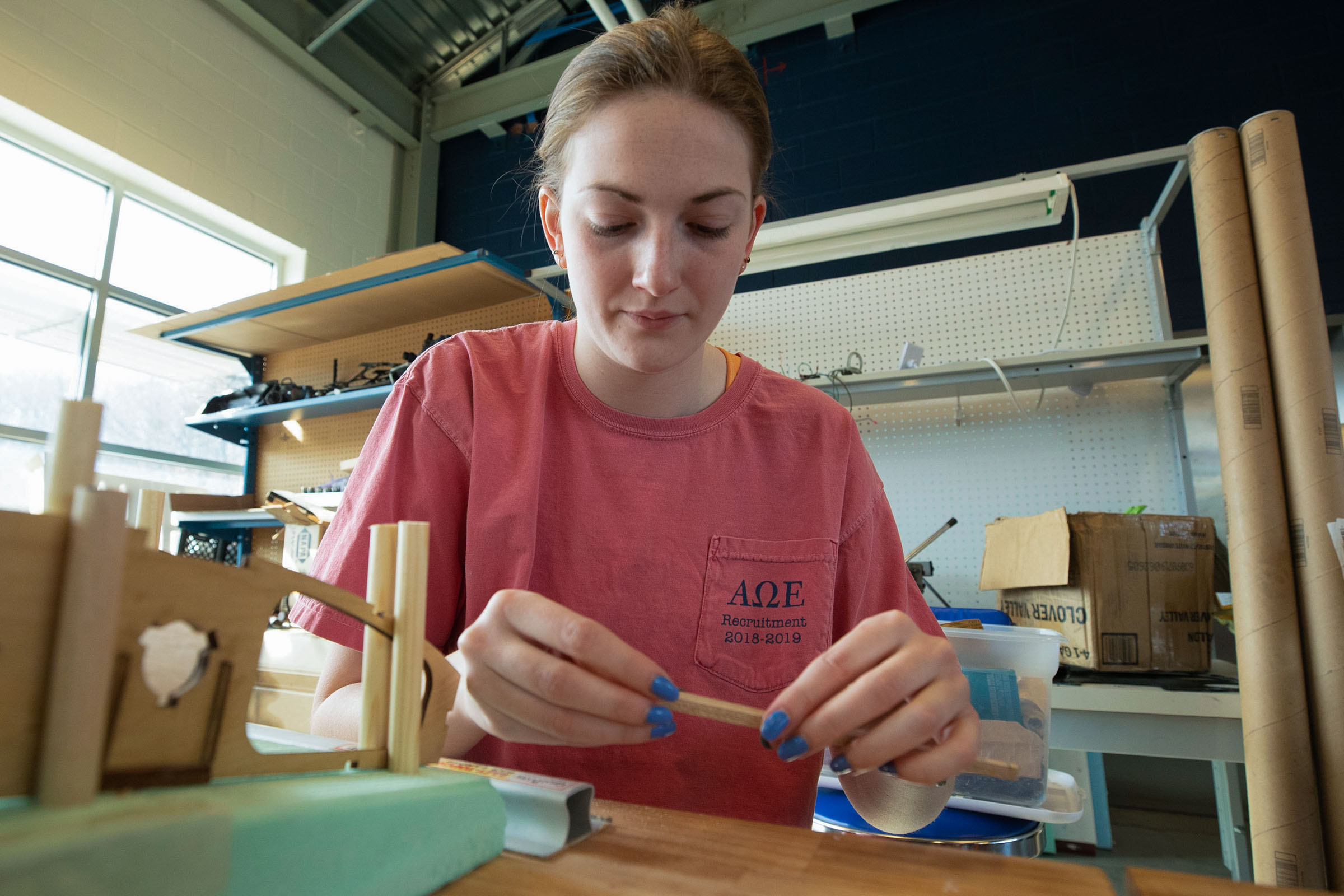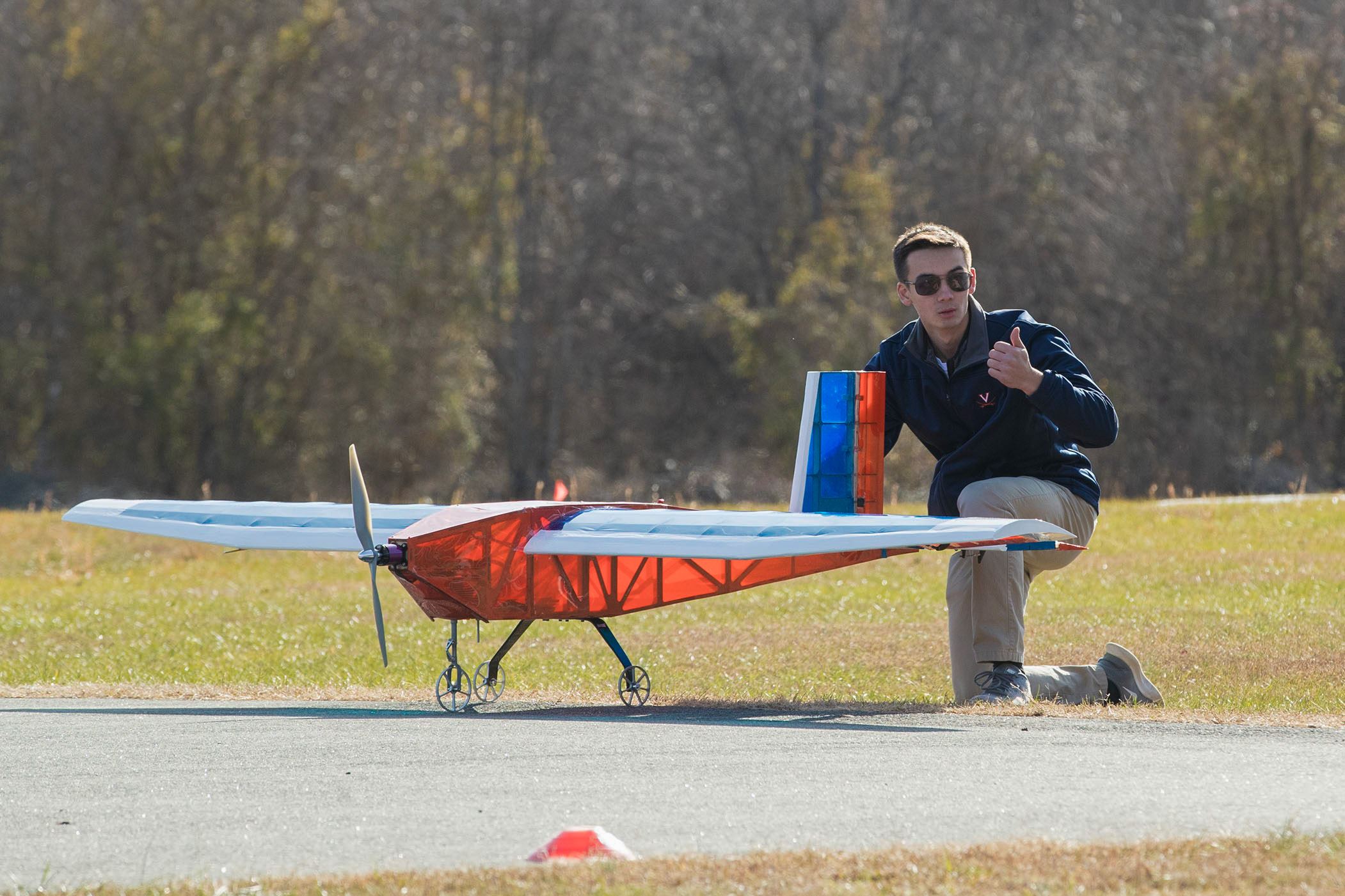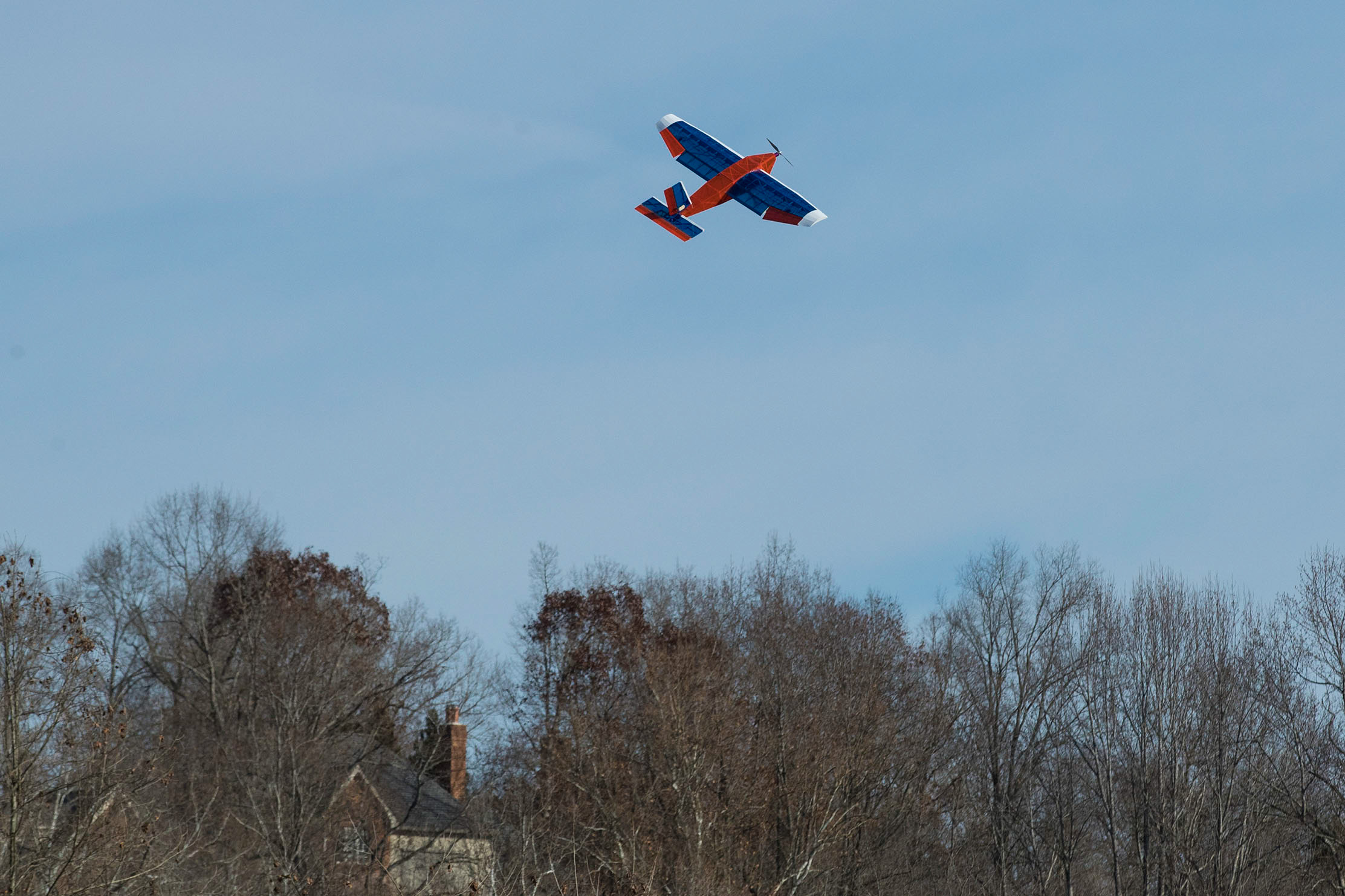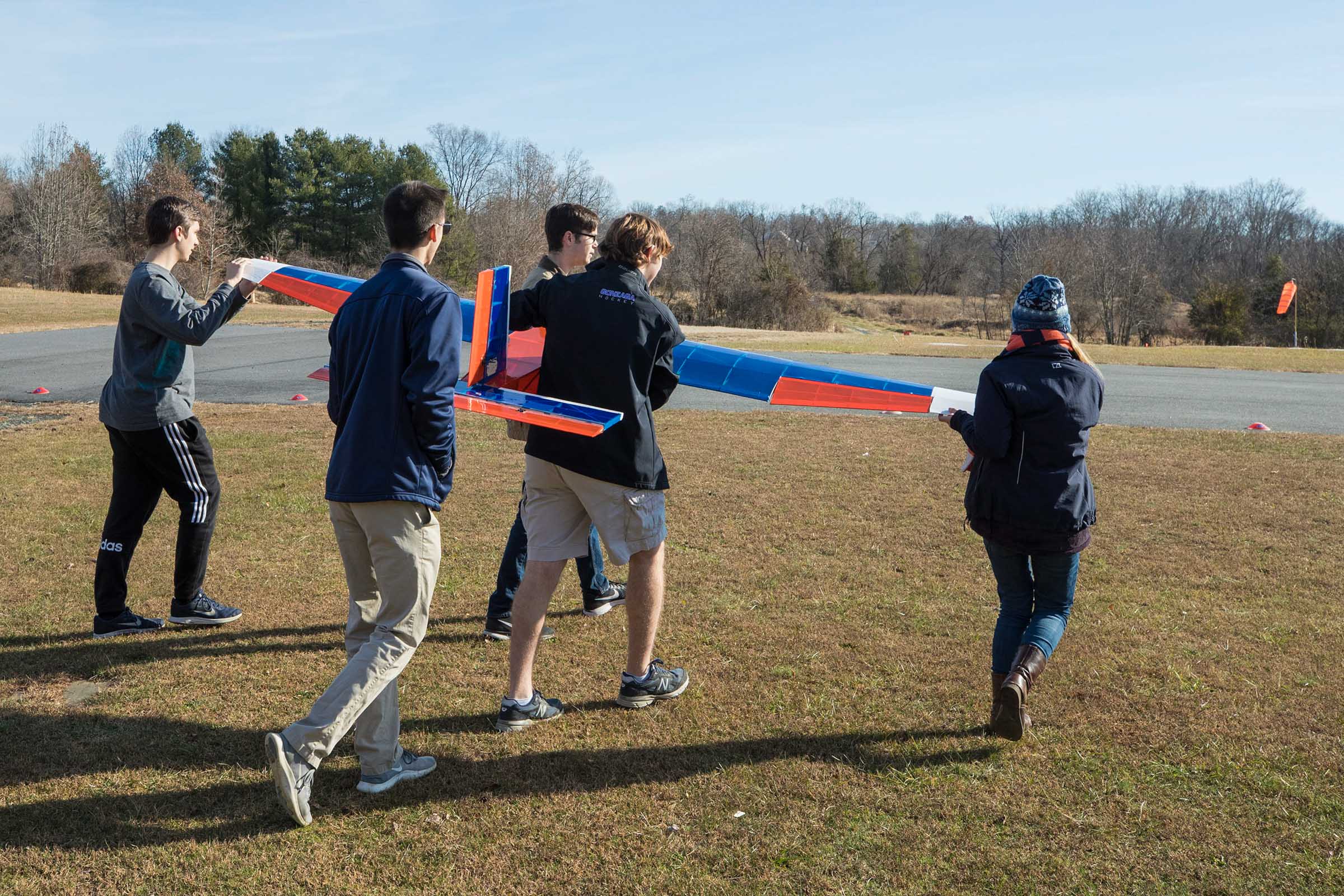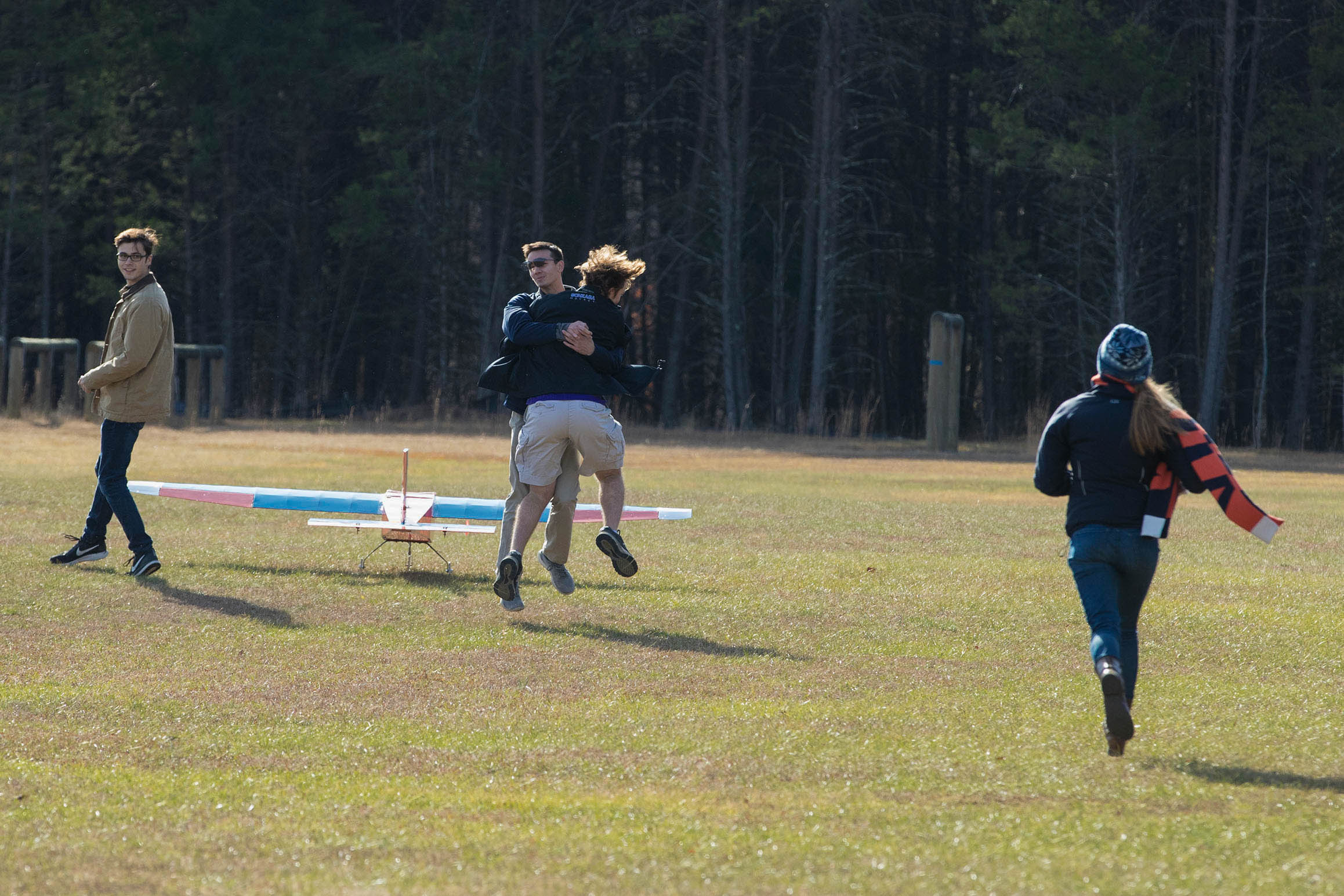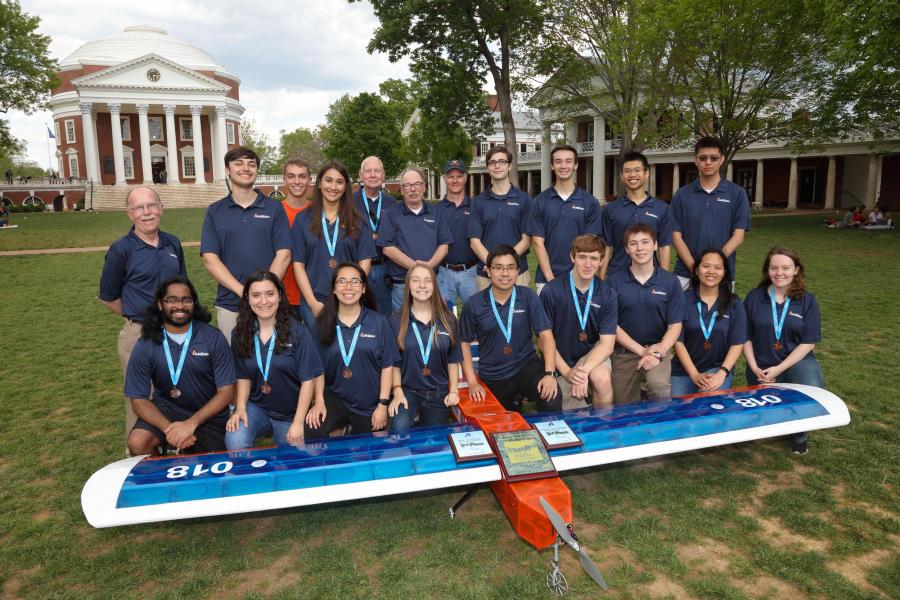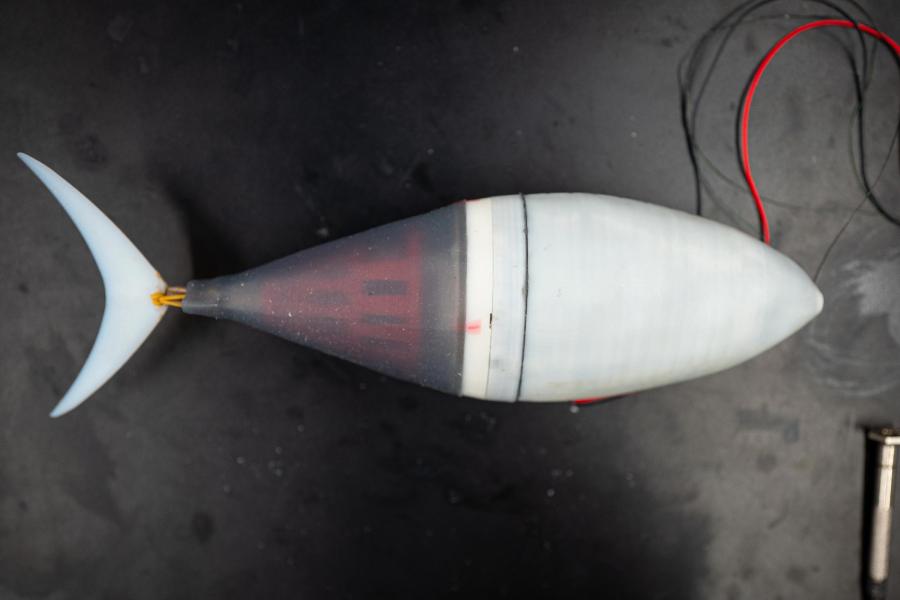During the first flight on Saturday, the plane took off and flew well, but again was buffeted by cross winds as it came in for a landing. Tilney-Volk brought the plane around for another loop and another landing attempt. But on the approach, a gust of wind hit the plane; the left wing dropped and the plane lost altitude. Tilney-Volk almost recovered it, but there was too much force and the wing sheared off.
The plane crashed.
“It was heart-clenching to see something you have worked on shattered,” Vidlak said. “We put a ton of time and work into building it.”
Luckily, the team traveled to Florida with three airplanes, a stockpile of tools and spare parts. They salvaged the wreckage of the damaged plane, got out the spare plane and got back into the game.
“This team handles adversity well,” said George Cahen, an emeritus materials engineering professor and a team adviser. “There was no bickering. They work well together.”
Tilney-Volk said he was stressed out by the crash, but he was under a lot of pressure. Friday’s competition sessions had been devoted to technical presentations and the team leaders had 10 minutes to present the specifications of the airplane.
They ran four seconds overtime and were docked five points.
In the flight portion of the competition, the team had multiple flights and could select their top three. Now the first flight was a bust, garnering zero points.
The second flight of the day went well, but the landing gear was damaged when it came down, which also cost them points.
“On the third flight, I was nervous,” Tilney-Volk said. “The wind had already messed me up and so I decided to fly more aggressively. We had to take off within a hundred feet. I took off in about half that distance.”
That third flight of the day, in the second airplane of the day, was a success. Smooth take-off, smooth flight, smooth landing.
Still, the team would be scored on its top three flights and so far, the team had flown one “good” one.
Under Pressure
On Sunday, the team had to get in two perfect flights before the competition ended at noon. The team members got up early, made seemingly earlier by the onset of Daylight Savings Time. After deliberation, they increased the payload weight, from 13 pounds to 16 pounds, agreeing that it would be too much of a risk to go to the maximum of 18 pounds.
“There was a lot of frustration and pressure,” Tilney-Volk said. “We’d been docked points on little things and the flights were worth 20 points.”
The two Sunday flights were good and solid, with the wind having died down some from the previous day. The plane bounced a little on one of the landings, but there were no infractions because it landed and nothing fell off.
“I was stressed every flight because I knew it was important,” Tilney-Volk said. “But the whole team encouraged me. They were not worried about me. They are awesome.”
“Charlie was fantastic,” Cahen said. “Watching those planes fly, he truly had one of the most stable flights. If they were giving points for style, we would have been a top-three plane.”
The Hoos Flying Club finished sixth among all the competitors in the flying portion of the competition, and third for flying among the U.S. teams. UVA placed sixth overall among more than 30 teams and third among the U.S. teams.
